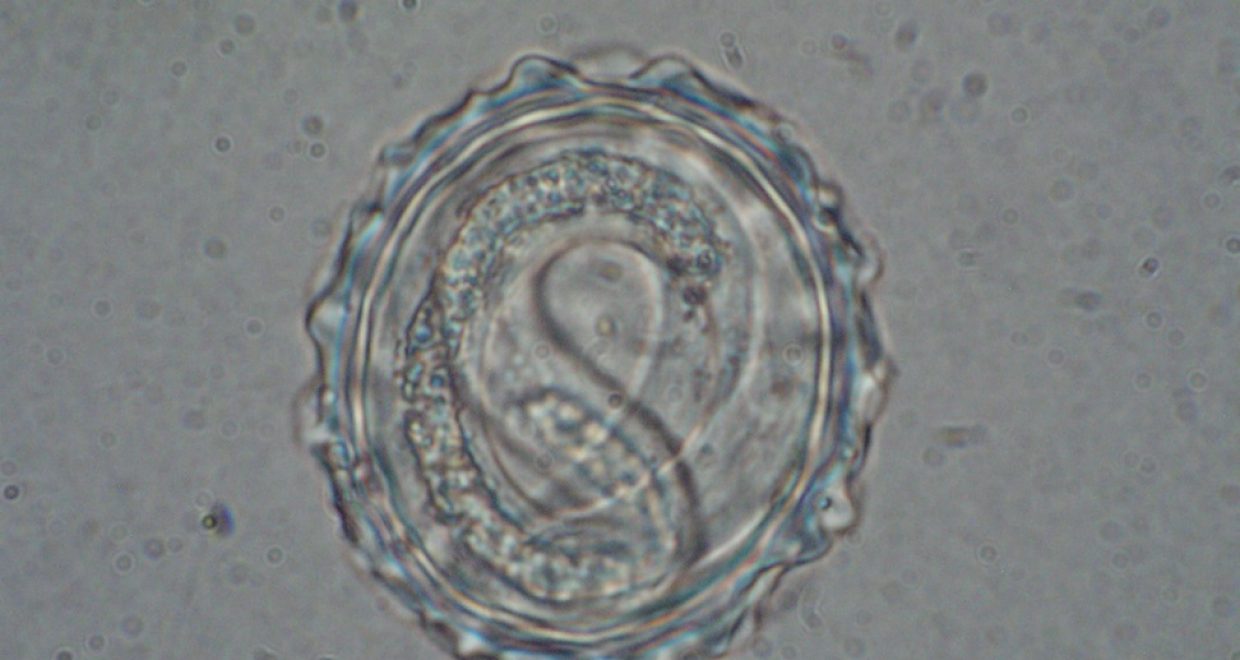Roundworm or whipworm, what are the differences?
‘Lessons from studying roundworm and whipworm in the mouse – common themes and unique features’, is the latest Special Isssue from Parasitology.
When we think of the human roundworm, Ascaris lumbricoides, or the human whipworm, Trichuris trichiura, we tend to focus upon the similarities between these two parasites. Why is this so?
Both are soil-transmitted helminths. Both produce resistant eggs that survive for many years in environments that lack effective sanitation, enhancing transmission, and explaining in part, their high global prevalence. Both are members of an important group known as the Neglected Tropical Diseases (NTD). Furthermore, within the NTDs, six are identified as ‘diseases with significant knowledge gaps’. Both Ascaris and Trichuris are among them.
Perhaps most persuasively, when we generate classic age-intensity curves – the relationship between parasite burden and host age – both Ascaris and Trichuris peak in the younger age classes and diminish as people age, reflecting reduced exposure and acquired immunity. Both, therefore, are classic childhood infections. Indeed, this similarity in epidemiological pattern has led to strategies for control, particularly mass drug administration targeted at school-age children.
However, this is where the similarities end. Ascaris and Trichuris are both described as intestinal worms but, in fact, a large female Ascaris measures 20-35 cms and lives in the small intestine. In contrast, Trichuris is much smaller at 3 to 5 cms and inhabits the large intestine.
Another important difference between the two species is their life cycle within the mouse. Trichuris muris, the murine equivalent of the human species, is a natural parasite of the mouse capable of completing its entire life-cycle in this host. Thus, whipworm eggs on arrival in the large intestine, hatch and the larvae grow and moult to adulthood without straying from this niche. In contrast, the mouse is an abnormal host for Ascaris, with only the early migratory phase, from gut to lungs, being replicated in the murine host. Thus, Ascaris in its early life as a migratory larva, moves from the gut via the liver to the lungs before, in humans, being coughed up to re-enter the gut to mature as an adult worm.
The use of mouse models in the study of fundamental aspects of Trichuris and Ascaris biology has a long history going back to the early 1900s. In the last 3 decades, research utilising mouse models has accelerated, with particular advances in our understanding of immune responses, the immunomodulatory properties of the worms and, perhaps most importantly, the co-morbidities associated with infection. However, it is also quite clear that advances in vaccine development, against both parasites, lag behind those of other pathogens such as hookworm and schistosomiasis.
The special issue explores the contributions made by mouse models of both Ascaris and Trichuris, in tackling fundamental gaps in our knowledge about these important, but still neglected, human pathogens. We hope that it will stimulate and enhance scientific interest in two parasites that remain among the most Neglected Tropical Diseases, in addition to evidencing the need for a granular approach when we study parasites of public health significance, such as roundworms and whipworms and, of course, parasites in general!

Top right: Histology section through the proximal colon of a mouse with a patent adult
T. muris infection showing the posterior ends of parasites loose in the gut lumen and front ends of the parasite burrowing in the host epithelial cells which line the gut – Ruth Forma
Bottom left: Cross section of murine lung with Ascaris suum larvae – Ranjith Lewis
Bottom right: Embryonated Trichuris muris egg – Ruth Forman
To view all the papers included in this Special Issue, click here!






